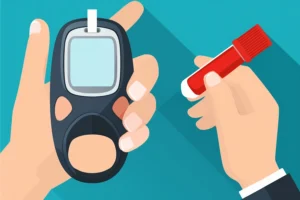From late 2023 to 2024, outbreaks of Oropouche virus disease (Oropouche) have been reported across multiple countries in South America and the Caribbean. This emerging viral infection, transmitted to humans through the bites of infected midges and certain mosquito species, is spreading beyond its historical range in the Amazon Basin, raising concerns about its growing impact.
Oropouche virus infections are now being detected in regions where the virus was previously unknown, highlighting its expanding reach. While the disease often presents with flu-like symptoms, severe cases have been reported including several fatalities.
With its increasing spread and potential health risks, understanding Oropouche virus including its transmission, symptoms and prevention has become more important than ever.
In this article, you will find a comprehensive explanation of Oropouche virus disease.
Introduction
Oropouche virus disease (OROV) is a viral infection caused by the Oropouche virus, an arthropod-borne virus (arbovirus) belonging to the Simbu serogroup of the Orthobunyavirus genus in the Peribunyaviridae family. The virus was first identified in 1955 in a febrile forest worker from Vega de Oropouche, a village near the Oropouche River, from which the virus gets its name.1 Since then, OROV has been responsible for multiple outbreaks in South America and the Caribbean, particularly in Brazil, Peru, Ecuador and Panama.
Transmission
The virus spreads to humans through the bite of infected arthropods, mainly the biting midge (Culicoides paraensis), which is the primary vector. Some mosquito species, such as Culex quinquefasciatus, may also act as secondary vectors.2
OROV follows two main transmission cycles:3
◦ Urban Cycle – The virus spreads between humans through vectors, primarily Culicoides paraensis(a biting midge), leading to large outbreaks in cities and towns.
◦ Sylvatic Cycle – The virus circulates in nature among wild animals (sloths, primates, birds) and insect vectors in forested areas.
Recent research has raised concerns about potential non-vector transmission. A case in Italy reported the presence of replication-competent Oropouche virus in the semen of a patient who had recently traveled to Cuba. The virus was also detected in blood, urine and serum, suggesting the need for further investigation into alternative transmission routes. 4 However, no confirmed cases of sexual transmission have been reported to date. 5
Pathophysiology
After an incubation period of 3–8 days following the bite of an infected midge or mosquito, Oropouche virus enters the bloodstream, leading to viremia, which peaks around the second day of symptom onset. The virus triggers an immune response causing fever, headache, myalgia and other systemic symptoms. In some cases, it may invade the central nervous system, resulting in meningitis or encephalitis, prolonging the illness for several weeks. Laboratory findings often show elevated liver enzymes and leukopenia. While most cases resolve within a week without long-term complications, some patients experience symptom recurrence, though the exact mechanisms remain unclear.3
Symptoms of Oropouche Fever
The Oropouche virus is transmitted primarily by the bite of infected insects and its symptoms typically appear within 3 to 10 days after exposure (incubation period).6
Common Symptoms:1
a. Fever: Sudden onset of high fever (38–40°C).
b. Headache: Often severe, with a retroorbital (behind the eyes) pain.
c. Muscle and Joint Pain: Myalgia (muscle pain) and arthralgia (joint pain) are common, often severe.
d. Chills: Accompanying the fever.
e. Nausea and Vomiting
f. Rash: A maculopapular rash that starts on the trunk and spreads to the extremities.
Additional Symptoms:1
a. Photophobia (Sensitivity to light).
b. Dizziness
c. Conjunctival Injection (Redness of the eyes).
d. Diarrhea
e. Abdominal Pain
f. Hemorrhagic Symptoms include:
◦ Epistaxis (nosebleeds)
◦ Gingival bleeding (gum bleeding)
◦ Melena (black, tarry stools)
◦ Menorrhagia (heavy menstrual bleeding)
◦ Petechiae (small red or purple spots on the skin)
Severe Symptoms (Rare Cases):3
a. Meningitis: Inflammation of the membranes surrounding the brain and spinal cord.
b. Encephalitis: Brain inflammation, potentially leading to severe neurological complications.
c. Asthenia: Loss of strength and severe fatigue.
Duration:1
◦ Typical Duration: Symptoms generally last between 2 to 7 days.
◦ Recurrence: In some cases (up to 60%), symptoms may recur after a few days or weeks, often with similar manifestations.
Diagnosis of Oropouche Virus Infection
Diagnosis of Oropouche virus infection is based on clinical presentation and laboratory testing.
- Virologic Diagnosis:7
◦ Molecular detection via RT-PCR or qRT-PCR is the primary diagnostic method.
◦ Samples include serum (collected within 2–7 days of symptom onset) and cerebrospinal fluid (CSF) in cases of suspected neurological involvement.
- Serological Diagnosis:7
◦ IgM (Immunoglobulin M) and IgG (Immunoglobulin G) ELISA tests can detect antibodies from day 5 onwards, but commercial kits are not widely available.
◦ Plaque reduction neutralization test (PRNT) confirms past infections.
◦ A second serum sample (1–2 weeks after the first) is recommended to confirm seroconversion.
- Diagnosis in Special Cases:7
◦ Pregnant women: Amniotic fluid can be tested for OROV RNA and IgM.
◦ Neonates: Umbilical cord blood, placenta and CSF can be tested for molecular and serological evidence of infection.
◦ Stillbirths & Congenital Cases: Tissue samples (brain, placenta) should be tested using PCR and immunohistochemistry.
Due to limited availability of serological assays, molecular methods (RT-PCR) remain the preferred diagnostic tool for timely detection and surveillance.
Treatment
Currently, there is no specific vaccine or antiviral treatment for Oropouche virus (OROV) infection. Supportive care is the mainstay of management, which includes:
a. Symptom Relief:1
◦ Rest to aid recovery.
◦ Fluids to prevent dehydration.
◦ Analgesics and Antipyretics (such as acetaminophen/paracetamol) to reduce fever and pain.
b. Hospitalization:
◦ Recommended for patients with severe symptoms such as neurological complications (e.g., aseptic meningitis).
◦ Close monitoring and supportive treatment may be required in such cases.
c. Precaution:
Aspirin-containing NSAIDs should be avoided in Oropouche virus (OROV) infection. This is because:1
a. Risk of Bleeding: OROV is an arboviral infection, and like other arboviruses (e.g., dengue), there is a potential risk of bleeding complications. Aspirin and NSAIDs (like ibuprofen and naproxen) can increase bleeding tendencies by inhibiting platelet function.
b. Reye’s Syndrome (in children): Aspirin use in viral infections, particularly in children and adolescents, can lead to Reye’s syndrome, a rare but severe condition affecting the liver and brain.
Prevention Strategies for Oropouche Virus Disease
Since there is no vaccine available for Oropouche virus, prevention relies on vector control and personal protective measures: 1,6,8
1. Vector Control:
◦ Use fine mesh bed nets and residual insecticide sprays on walls.
◦ Reduce populations of biting midges and mosquitoes through entomological surveillance and environmental management.
2.Personal Protection:
◦ Wear protective clothing (long sleeves and pants).
◦ Use insect repellents containing DEET, IR3535 or icaridin.
3.Travel Recommendations:
◦ Travelers to affected areas should take precautions against insect bites.
◦ Pregnant women are advised to reconsider non-essential travel to areas with a Level 2 Health Advisory due to potential risk of mother-to-child transmission and possible adverse impacts on the fetus, including fetal death or congenital abnormalities.
4.Infection Prevention for Healthcare & Lab Workers:
◦ Follow Standard Precautions when handling patient fluids or lab cultures.
◦ Lab personnel should adhere to biosafety guidelines.
5.Possible Sexual Transmission:
◦ The virus has been detected in semen, but sexual transmission is not confirmed.
◦ Travelers should follow CDC guidelines for safe practices during and after travel.
By following these measures, individuals can reduce their risk of Oropouche virus infection.
Conclusion:
Oropouche virus is an emerging arboviral disease with increasing outbreaks in South America and the Caribbean. While most infections result in mild, flu-like symptoms, severe cases can lead to neurological complications. With no specific antiviral treatment or vaccine available, prevention remains the most effective strategy. Vector control measures, personal protective precautions, and adherence to travel and healthcare safety recommendations are essential in reducing the spread of the virus. Continued research is needed to better understand transmission dynamics, potential non-vector transmission routes, and long-term health effects. Public health awareness and proactive surveillance will be critical in mitigating the impact of Oropouche virus disease.
References
- Clinical Overview of Oropouche Virus Disease. CDC. Published on January 30, 2025. Accessed on march 19, 2025. Available from: https://www.cdc.gov/oropouche/hcp/clinical-overview/index.html
- Tri Dinh, Jamil Kanji, Stephen Vaughan. Oropouche virus. CMAJ March 10, 2025;197 (9):E244. Available from: https://www.cmaj.ca/content/197/9/E244
- Yuli Zhang, Xiao Liu, Zhen Wu, Shuo Feng, Ke Lu, Wenbing Zhu, Hengyi Sun, Guoyu Niu. Oropouche virus: A neglected global arboviral threat. Virus Research. 2024;341:199318. https://www.sciencedirect.com/science/article/pii/S016817022400011X#:~:text=The%20transmission%20of%20Oropouche%20virus,virus%20has%20not%20been%20observed.
- Castilletti C, Huits R, Mantovani R, et al. Replication-Competent Oropouche Virus in Semen of Traveler Returning to Italy from Cuba, 2024. Emerging Infectious Diseases. 2024;30(12):2684-2686. https://wwwnc.cdc.gov/eid/article/30/12/24-1470_article#;
- 2024 Oropouche Outbreak. CDC. Published on March 4, 2025. Accessed on March 19, 2025. Available from: https://www.cdc.gov/oropouche/outbreaks/2024/index.html
- Oropouche virus disease. WHO. Published on October 22, 2024. Accessed on March 19, 2025. Available from: https://www.who.int/news-room/fact-sheets/detail/oropouche-virus-disease
- Recommendations for the Detection and Surveillance of Oropouche in possible cases of vertical infection, congenital malformation, or fetal death. PAHO. Published on July 17, 2024. Accessed on March 20, 2025. Available from: https://www.paho.org/sites/default/files/2024-11/orovposible-infeccion-verticallabeng.pdf
- Oropouche virus disease. PAHO. Accessed on March 20, 2025. Available from: https://www.paho.org/en/topics/oropouche-virus-disease




